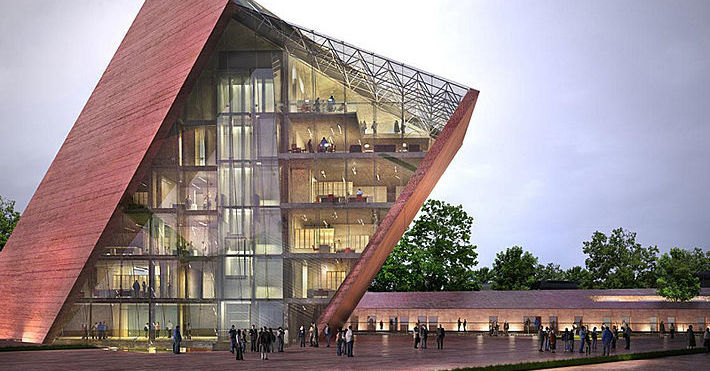The Museum of the Second World War in Gdansk, Poland was established nearly a decade ago in a time of pan-European optimism, and its goal is to tell a story of destruction that surpassed Poland’s boundaries. Some of the items in the museum include an Enigma encoding machine, keys to the homes of Jews who were killed by their Polish neighbors in the village of Jedwabne, American and Soviet tanks, and flags from the Polish Home Army that fought the Nazis.
Today, the museum’s future is uncertain. Construction has been going on for the last five years, costing nearly $114 million. The museum probably won’t meet its scheduled opening in January and even if it does, the government may not be able to finance it.
Piotr Glinski, the Minister of Culture of Poland’s conservative government, has requested that the Museum of the Second World War merges with another museum. The other is devoted to the Battle of Westerplatte, in September 1939, the first battle of the invasion of Poland when Polish forces fought the Nazis before surrendering. This was an event the minister regards as being more symbolic of a heroic Polish self-defense. Some would say the museum didn’t put enough emphasis on the Polish perspective and doesn’t focus enough on the Battle of Westerplatte, which is symbolic for Polish citizens.
The government, led by Prime Minister Donald Tusk created the Museum of the Second World War in 2008. It was designed by the Polish firm Kwadrat. It is an aspiring building with 5,000 square meters of space for displaying the exhibits and employs a staff of 60.
The museum has exhibit areas dedicated to the Holocaust and the Battle of Westerplatte, with emphasis on civilians rather than the military. The museum has 41,000 articles, of which 2,000 will go in the permanent exhibition. There are coat buttons from soldiers executed by Soviet NKVD agents in the notorious 1940 Katyn massacre. The museum also has exhibits dedicated to the Pacific theater of WWII and the French and Danish resistance fighters and an area for children that recreates a middle-class Warsaw apartment before and during the war.
The museum also has an exhibit dedicated to the Warsaw Rising, in which the Poles fought the Nazis for sixty-three days in 1944, with limited aid from the Allies, before the Soviet Army invaded. That invasion is the focus of another museum in Warsaw, the Warsaw Rising Museum, which opened in 2004.
The museum merger hasn’t been easy. The Polish Ombudsman’s office has filed a lawsuit to block the merger. The Office is a state body that defends civil liberties; arguing that Poland’s museum council, also a state entity, never sanctioned the move. The Government replied that the council’s approval was not required. The government officials thought they could immediately force this merger, but now they find they have reached a stalemate.
It would be a huge disgrace to Poland and internationally as well if the politicians changed the exhibition that has already been created by renowned historians from Poland and elsewhere.
The Minister has no intention of altering the museum’s contents and has indicated that it would open as planned. There is enough financing allocated for the opening and for at least six months. The government has not committed to additional financing after that period, The New York Times reported.
